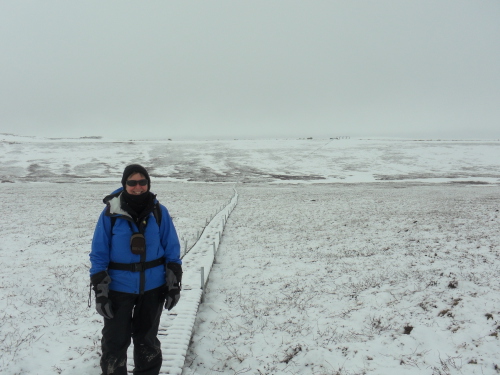
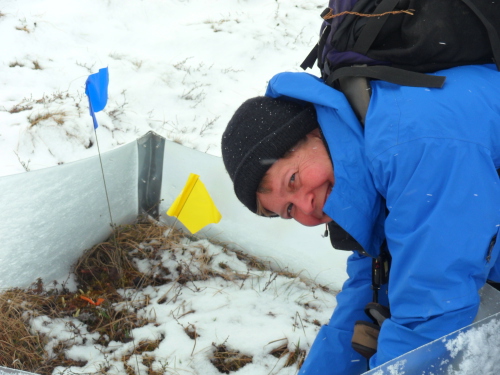
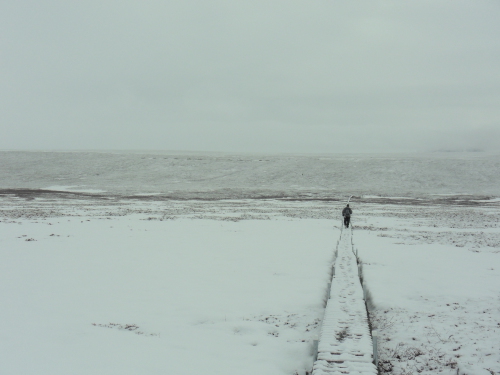
When we sign out on the board to let everyone know where we've gone and when we expect to return, we write down the name Imnaviat. This is the general watershed location of our plots for the Snowmelt Project. The name has a beautiful ring to it, I think, so I've spent a good portion of the morning searching the name Imnaviat or Imnavait to find its meaning in the native language. So far I've found out that the Alaskan natives living in this North Slope Borough (like a county or parish) are the Inupiat, and their language is Inupiaq. I found a great reference source at the [Alaskan Native Language Center] (http://www.uaf.edu/anlc/) at the University of Alaska. On that site, I found the North Slope Inupiaq to English Dictionary. After a good bit of study I found a meaning for the first part of the word, imna, meaning "that of the past". That seems to fit pretty well for now; maybe one of you out there reading this can find more information and share it.
There is always more to a story than meets the eye, and that is so true on this project. Another interesting aspect of our project is plant phenology, or the study of the sequence and timing of natural events, which in this case, involve plants. Interestingly, I came upon a reference in the Inupiaq dictionary to May as being the month ducks return to the area. Many native words refer to timing of events in the natural world, especially events that are meaningful for day to day survival. In our case, looking at the timing of when plants begin to flower and leaf out are practical implications of climate change. For example, birders are very interested in plant phenology, because birds are quite dependent on plants for food sources and shelter. Birds migrate according to day length, which is unchanging; but the problem comes in with the timing of their arrival. Perhaps the food or cover source stage they need when they arrive has already come and gone due to earlier warming. Will or how will those birds adapt to changing conditions?
Carolyn Livensperger is studying plant phenology on the Snowmelt Project plots. Do you see the blue beads in the plot?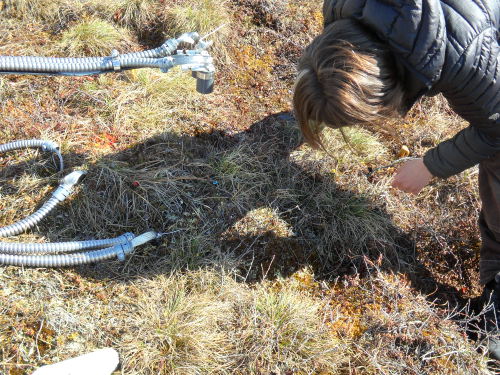
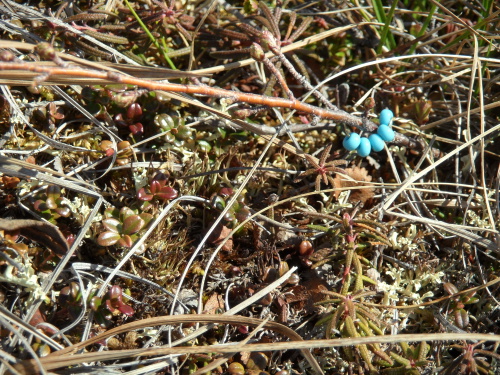
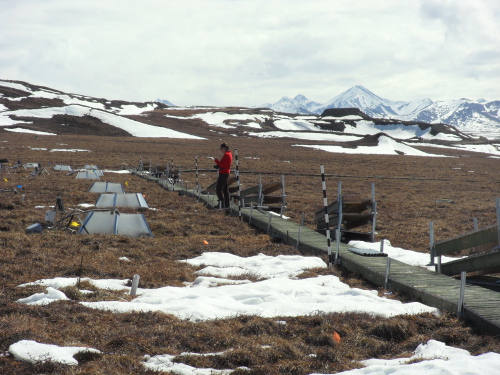


Comments